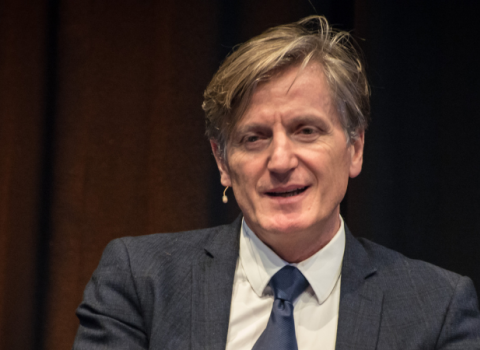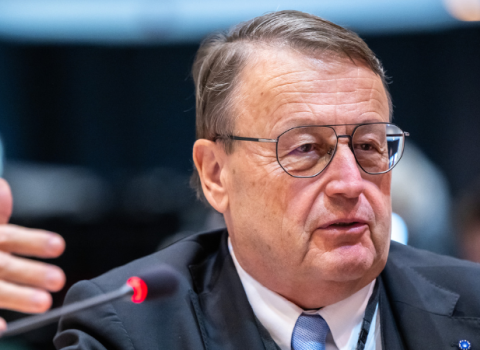
Martin Schuurmans, the new head of the EIT.
At its inaugural meeting, the 18-strong governing board unanimously elected an industrial scientist, Martin Schuurmans, former Executive Vice President of Philips Research to its head, as in a proud moment for Hungary, the country became host to its first EU institution.
Hungarian Prime Minister Ferenc Gyurcsany said the EIT will enable the continent to better deploy the “natural resources” of talent and knowledge that is available in all countries in Europe. “With the help of EIT we are going to utilise them more effectively than ever.”
For the President of the European Commission, Jose Manuel Barroso, the ceremony was a fulfilment of his ambition to establish a European equivalent to the innovation powerhouse of MIT (Massachusetts Institute of Technology), and he acknowledged it as “a moment of great personal satisfaction.”
While the body that began work on Monday is a scaled-back version of what Barroso envisaged, it does have funding of Euro 300 million with which to begin to meet the brief of increasing the level of innovation within Europe.
The vision fell short because Barroso was unable to persuade industry to put money into the plan. At the opening ceremony he renewed his call for industrial support saying, “The involvement of business is crucial because lack of business-funded R&D explains almost 85 percent of the gap between the EU and the USA.”
Barroso claimed the opening of the EIT as a “milestone” to another cherished Commission ambition - of creation of the so-called Fifth Freedom. This involves enabling the free movement of knowledge across a Europe where there are no barriers to researchers moving seamlessly from one country to another.
“By attracting and retaining the best and most talented students, researchers and staff from across Europe, and worldwide, the EIT will bring significant value-added to the EU’s research and innovation landscape,” said Barroso.
Key research areas for EIT are to find ways of dealing with climate change, develop more renewable energy sources and produce the next generation of information and communication technologies.
After the ceremonial opening, the governing board, drawn from industry, further education and research, held its first meeting to begin to put some flesh on these priorities. The 18 board members all claim a track record in innovation. As he accepted the post of chairman Schuurmans said, “I think I have never seen a group of people which has such collective wisdom in so many fields of innovation.”
Although it has a physical home base, much of EIT’s actual research will take place in Knowledge and Innovation Communities (KICs), which are envisaged as highly integrated, but virtual, public-private networks of universities, research organisations and businesses from across the Continent. The board is now in discussion on how exactly these KICs should be constituted and what subjects they will pursue. It has until 30 June 2009 to submit a Strategic Innovation Agenda to the European Commission
“Let’s make sure that in the next 2 – 3 years we have at least two successful KICs, successful in innovation and successful in education,” said Schuurmans.





 A unique international forum for public research organisations and companies to connect their external engagement with strategic interests around their R&D system.
A unique international forum for public research organisations and companies to connect their external engagement with strategic interests around their R&D system.